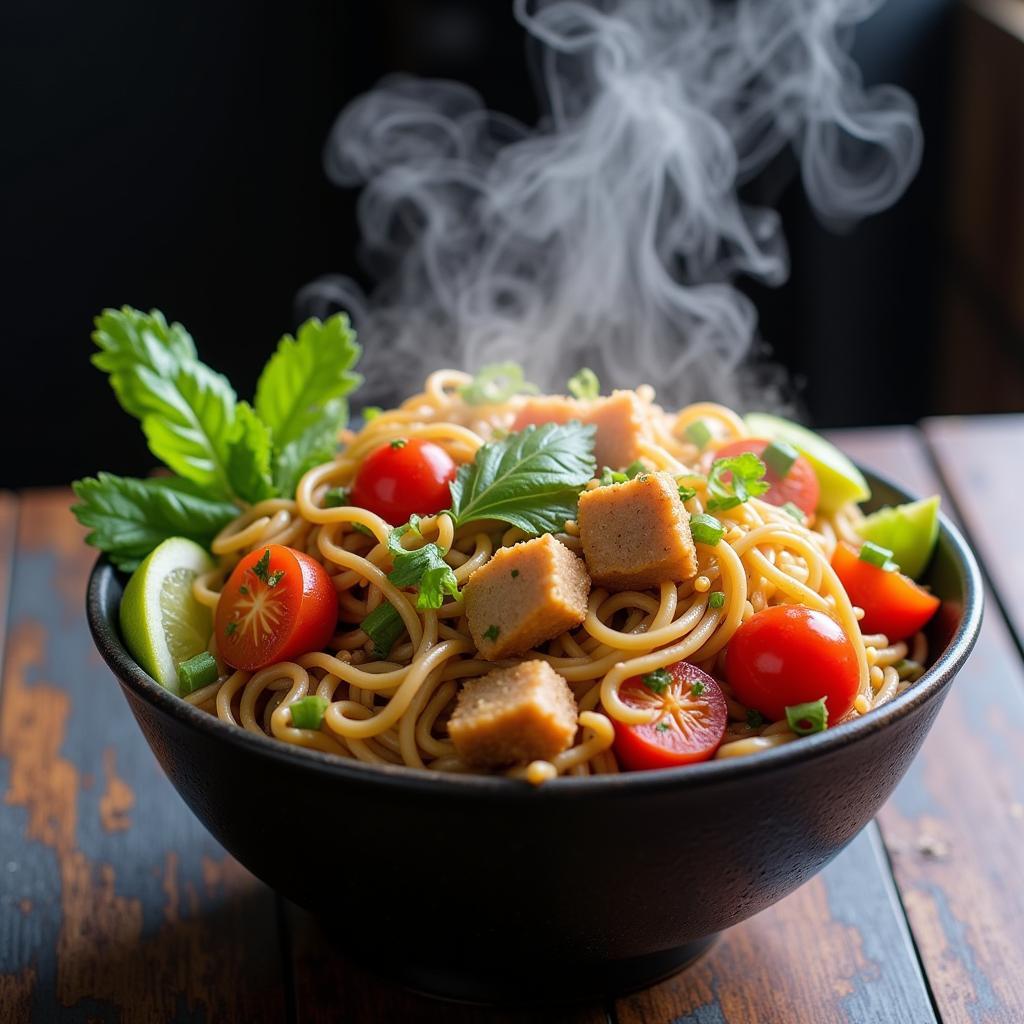Soy sauce is a staple in many Chinese dishes, but thankfully, a delicious and authentic Chinese food experience is still possible without it. Soy-free Chinese food is becoming increasingly popular, whether due to allergies, intolerances, or simply personal preference. This guide explores the world of soy-free Chinese cuisine, providing you with the knowledge and resources to enjoy flavorful meals without compromise. Let’s discover how to navigate menus and create soy-free versions of your favorite dishes.
Understanding Soy in Chinese Cuisine
Soy sauce is used in Chinese cooking for its salty, umami flavor and its ability to enhance the overall taste of a dish. It’s often found in marinades, stir-fries, sauces, and even dipping condiments. For those avoiding soy, understanding where it typically hides is the first step to enjoying soy-free Chinese food. Common culprits include hoisin sauce, oyster sauce, and many pre-made sauces. Even seemingly innocent dishes like steamed vegetables can sometimes contain hidden soy.
Did you know that many Chinese restaurants are now catering to dietary restrictions? Be sure to check out the lucky chinese food menu for soy-free options.
Ordering Soy-Free Chinese Food
Navigating a Chinese restaurant menu when you’re avoiding soy can seem daunting, but it doesn’t have to be. Clear communication with the restaurant staff is key. Explain your dietary needs clearly and politely. Ask about ingredients and preparation methods. Many restaurants are happy to accommodate special requests, particularly if you give them advance notice. Don’t be afraid to ask for simple steamed dishes with fresh ingredients and minimal sauces.
- Specify “no soy sauce”: This seems obvious, but it’s crucial.
- Inquire about hidden soy: Ask about ingredients in sauces, marinades, and broths.
- Choose fresh ingredients: Opt for dishes with steamed vegetables, plain rice, and lean proteins.
- Consider regional cuisines: Some regional Chinese cuisines naturally use less soy sauce than others. Cantonese cuisine, for instance, often features lighter sauces.
 Fresh Ingredients for Soy-Free Chinese Dishes
Fresh Ingredients for Soy-Free Chinese Dishes
Cooking Soy-Free Chinese Food at Home
Cooking soy-free Chinese food at home gives you complete control over the ingredients. Explore the world of soy sauce alternatives like coconut aminos, tamari (ensure it’s gluten-free if needed), or even fish sauce (for a different flavor profile). Experiment with spices and herbs like ginger, garlic, Sichuan peppercorns, and star anise to create authentic flavors.
Soy-Free Chinese Recipes
Here are some ideas to get you started:
- Soy-Free Stir-Fry: Use coconut aminos in place of soy sauce and load up on your favorite vegetables and protein.
- Soy-Free Fried Rice: Make your own flavorful sauce with ginger, garlic, and a touch of salt.
- Soy-Free Steamed Fish: Steam a whole fish with ginger, scallions, and a drizzle of sesame oil.
You can find great ideas for best chinese frozen food which you can easily adapt for soy-free cooking.
“When cooking soy-free Chinese food, don’t be afraid to experiment with different flavor combinations,” advises Chef Mei Lin, a renowned expert in Chinese cuisine. “The key is to balance the flavors and create a dish that is both healthy and delicious.”
Frequently Asked Questions About Soy-Free Chinese Food
Is soy-free Chinese food bland? Absolutely not! With the right ingredients and techniques, soy-free Chinese food can be just as flavorful as traditional dishes.
What can I use instead of soy sauce? Coconut aminos, tamari (gluten-free if needed), and fish sauce are all good alternatives.
Can I eat at a Chinese restaurant with a soy allergy? Yes, with careful communication and planning.
Looking for reliable chinese food delivery margate? Check out your local options and inquire about their soy-free options.
 Delicious Soy-Free Chinese Noodles
Delicious Soy-Free Chinese Noodles
Conclusion
Enjoying soy-free Chinese food is absolutely achievable, whether dining out or cooking at home. By understanding the role of soy in Chinese cooking, communicating effectively with restaurants, and exploring alternative ingredients, you can savor the delicious world of Chinese cuisine without compromising your dietary needs. Remember to check out options like j chinese food for more ideas. Explore new flavors and embrace the culinary adventure!
FAQ
- What are the most common soy-containing ingredients in Chinese food?
- How can I identify hidden soy in restaurant dishes?
- What are the best soy sauce substitutes for Chinese cooking?
- Are there any specific regional Chinese cuisines that are naturally lower in soy?
- What are some simple soy-free Chinese recipes for beginners?
- Can I find soy-free Chinese ingredients at my local grocery store?
- Where can I find more resources and recipes for soy-free Chinese cooking?
More questions?
Consider exploring food corner menu for inspiration.
Need help? Contact us 24/7: Phone: 02437655121, Email: minacones@gmail.com or visit us at 3PGH+8R9, ĐT70A, thôn Trung, Bắc Từ Liêm, Hà Nội, Việt Nam. We have a dedicated customer service team ready to assist you.